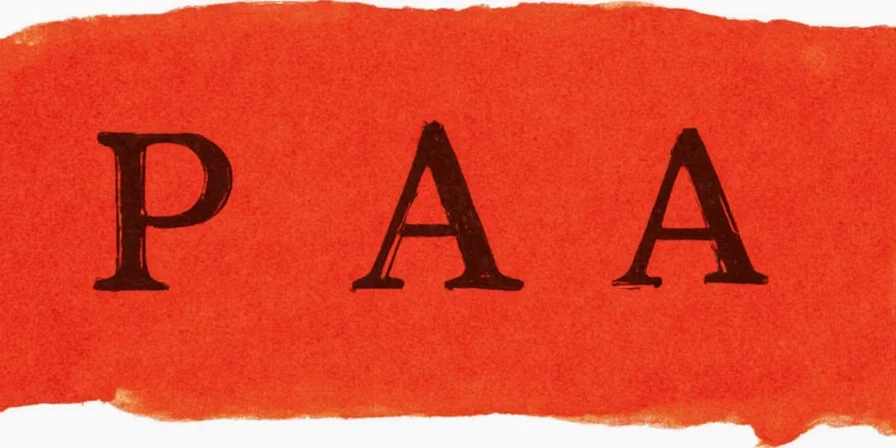If you're a language learner, food enthusiast, or traveler who has ever tried to pronounce an Italian menu or read an ingredient list for risotto alla Milanese, you've likely wondered: Why is 'a' so prevalent in Italian? This linguistic pattern isn't coincidental—it reflects deep cultural and grammatical structures. In this comprehensive guide, we'll decode the linguistic origins of Italian's favorite vowel, explore its culinary significance, and reveal why this seemingly small letter carries immense cultural weight.
Table of Contents
- The Linguistic Roots: Why Italian Loves the Letter 'A'
- From Al Dente to Alla Gricia: How Food Verbs Embrace 'A'
- Cultural Connotations: The Feminine Touch of 'A'
- Spice it Up! Regional Flavor Words Ending in 'A'
- 5 Practical Tips for Using 'A' Like a Native Speaker
- Conclusion: Embrace the 'A' and Let Your Inner Italian Shine
The Linguistic Roots: Why Italian Loves the Letter 'A'
Italian evolved directly from Vulgar Latin, where feminine nouns predominantly ended in '-a' (e.g., Latin 'domus' became Italian 'casa'). This morphological inheritance explains why approximately 70% of Italian feminine nouns retain the '-a' ending today. Unlike Spanish or French, Italian preserved Latin's gender system with minimal erosion, making 'a' endings ubiquitous in everyday vocabulary.

Grammatically, the '-a' ending serves as a critical gender marker. While masculine nouns typically end in '-o' (tavolo), feminine nouns like 'finestra' (window) and 'pasta' consistently use '-a'. This pattern extends to adjectives and participles, creating rhythmic consistency across the language.
Verb Endings and the Structural Role of 'A'
The letter 'a' anchors key verb conjugations. Third-person singular present tense verbs (e.g., 'parla' - he/she speaks) and imperative forms ('mangia!' - eat!) rely on 'a' endings. Past participles like 'insalata' (salad) derive from feminine agreement rules, demonstrating how 'a' functions as grammatical glue rather than mere ornamentation.
| Word | Meaning | Grammatical Function |
|---|---|---|
| casa | house | Feminine noun (core vocabulary) |
| finestra | window | Feminine noun (descriptive element) |
| pasta | pasta | Culinary term (cultural identifier) |
| arancia | orange | Natural element (everyday object) |
From Al Dente to Alla Gricia: How Food Verbs Embrace 'A'
The preposition 'alla' (meaning 'in the style of') transforms culinary instructions into cultural narratives. Unlike static labels, these phrases encode regional histories: 'pasta alla carbonara' references Rome's charcoal workers, while 'alla pescatora' ('fisherman's style') tells coastal communities' stories. This linguistic structure turns recipes into time capsules of Italian identity.

Cooking Techniques and Cultural Signifiers
- Alla griglia: Indicates Mediterranean grilling traditions (pesce alla griglia)
- Alla Romana: Preserves ancient Roman cooking techniques (carciofi alla Romana)
- Alla cacciatora: Embodies rural hunting culture (pollo alla cacciatora)
- Alla Napoletana: Celebrates Naples' culinary innovation (pasta alla Napoletana)
These expressions function as edible anthropology—ordering 'alla diavola' isn't just choosing spice level; it's engaging with centuries of culinary storytelling where 'a' serves as the narrative connector.
Cultural Connotations: The Feminine Touch of 'A'
Beyond grammar, the '-a' ending embodies Italian cultural values. Feminine nouns like 'la vita' (life), 'la famiglia' (family), and 'la casa' (home) center domestic spheres historically governed by women. This linguistic pattern reinforces Italy's matrifocal social structure, where nonnas preserve cultural continuity through food and language.

Critically, the prevalence of 'a' creates phonetic warmth that shapes Italy's global image. Unlike Germanic languages' clipped consonants, Italian's vowel-dominant structure—with 'a' as the most frequent vowel—produces melodic cadence. This sonic characteristic contributes significantly to Italy's cultural export appeal, making even complex terms like 'nduja' feel accessible to non-speakers. The letter 'a' thus functions as both linguistic marker and soft power tool.
Spice it Up! Regional Flavor Words Ending in 'A'
Regional dialects showcase 'a' endings as cultural fingerprints. While standardized Italian uses '-a' consistently, local variants reveal historical trade routes and agricultural practices:
| Region | Word | Linguistic Significance |
|---|---|---|
| Tuscany | focaccia | Derives from 'focus' (hearth), reflecting ancient bread-baking traditions |
| Sicily | granita | Arabic 'qatr' (dripping) adapted through Sicilian dialect |
| Campania | mozzarella | From 'mozzare' (to cut), describing cheese-making technique |
| Lazio | carbonara | Linguistic fossil of Rome's charcoal-worker communities |
| Calabria | 'nduja | French 'andouille' transformed through Calabrian pronunciation |

Each term represents a linguistic adaptation event where '-a' endings assimilated foreign influences into Italian's phonetic framework—a process ongoing since Roman Empire trade routes.
5 Practical Tips for Using 'A' Like a Native Speaker
Master these nuances to avoid common learner pitfalls:
- Gender Prediction: While 80% of '-a' ending nouns are feminine, watch for exceptions like 'il problema' (masculine). Context determines usage.
- Prepositional Nuances: 'Alla' contracts with feminine nouns ('alla moda'), but becomes 'al' before masculine ('al forno').
- Verb Conjugation Keys: Third-person singular verbs ('lavora') and imperative commands ('parla!') consistently use 'a'.
- Regional Pronunciation: In Southern Italy, 'a' sounds more open (like 'father'), while Northern accents shorten it.
- Cultural Context: Words ending in 'a' often denote communal experiences ('la passeggiata' - evening stroll), reflecting collectivist values.

Conclusion: Embrace the 'A' and Let Your Inner Italian Shine
The letter 'a' transcends grammatical function—it's Italy's cultural DNA crystallized in sound. From Latin roots to modern menus, this vowel carries centuries of social evolution, regional diversity, and culinary innovation. Understanding its prevalence unlocks deeper appreciation of Italian identity, where language and culture intertwine like strands of perfect al dente spaghetti.

By recognizing 'a' as both linguistic marker and cultural signifier, you move beyond vocabulary lists to grasp Italy's living heritage. The next time you order 'pasta alla Norma', remember you're participating in a millennium of linguistic tradition—one delicious 'a' at a time.
Frequently Asked Questions
Why do Italian food terms overwhelmingly end in 'a'?
Most culinary terms derive from feminine nouns describing preparation methods (e.g., 'carbonara' from 'carbonaro' - charcoal worker). Italian's grammatical gender system preserves Latin's feminine noun endings, making '-a' dominant in food vocabulary.
Are there Italian words where 'a' changes meaning based on position?
Yes. In 'parla' (he speaks) versus 'parla' (speak!), the 'a' ending indicates tense and mood. Position determines whether it's third-person present or imperative form—a critical distinction for accurate communication.
How does the 'a' ending affect Italian's global perception?
The frequent 'a' creates melodic cadence that contributes to Italian's reputation as a 'beautiful language.' This sonic quality enhances cultural exports like cuisine and fashion, making the language feel approachable and emotionally resonant worldwide.











 浙公网安备
33010002000092号
浙公网安备
33010002000092号 浙B2-20120091-4
浙B2-20120091-4